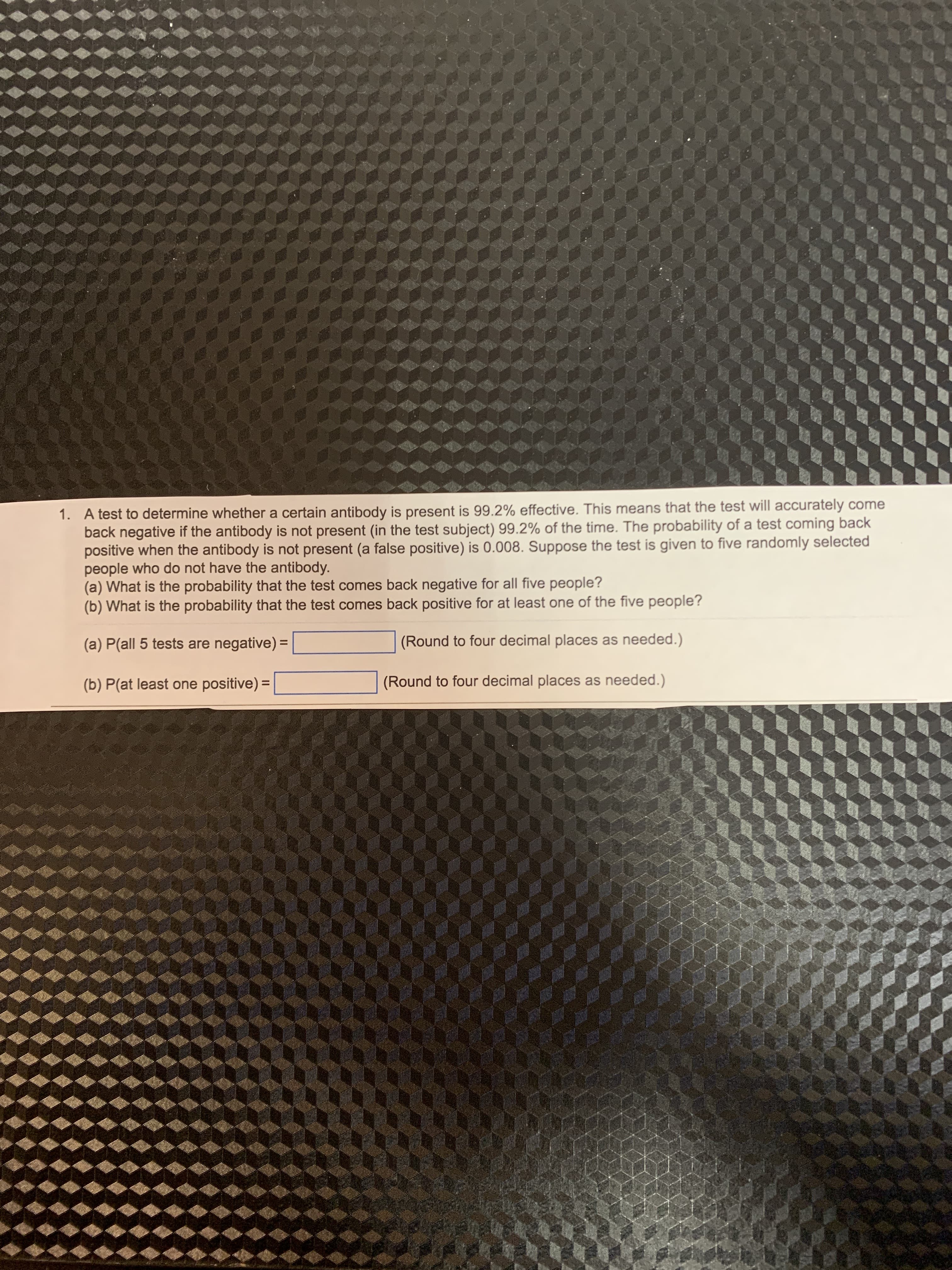1. A test to determine whether a certain antibody is present is 99.2% effective. This means that the test will accurately come back negative if the antibody is not present (in the test subject) 99.2% of the time. The probability of a test coming back positive when the antibody is not present (a false positive) is 0.008. Suppose the test is given to five randomly selected people who do not have the antibody. (a) What is the probability that the test comes back negative for all five people? (b) What is the probability that the test comes back positive for at least one of the five people? (a) P(all 5 tests are negative) = (Round to four decimal places as needed.) %3D (b) P(at least one positive) = (Round to four decimal places as needed.) %3D
1. A test to determine whether a certain antibody is present is 99.2% effective. This means that the test will accurately come back negative if the antibody is not present (in the test subject) 99.2% of the time. The probability of a test coming back positive when the antibody is not present (a false positive) is 0.008. Suppose the test is given to five randomly selected people who do not have the antibody. (a) What is the probability that the test comes back negative for all five people? (b) What is the probability that the test comes back positive for at least one of the five people? (a) P(all 5 tests are negative) = (Round to four decimal places as needed.) %3D (b) P(at least one positive) = (Round to four decimal places as needed.) %3D
Holt Mcdougal Larson Pre-algebra: Student Edition 2012
1st Edition
ISBN:9780547587776
Author:HOLT MCDOUGAL
Publisher:HOLT MCDOUGAL
Chapter11: Data Analysis And Probability
Section11.8: Probabilities Of Disjoint And Overlapping Events
Problem 2C
Related questions
Question

Transcribed Image Text:1. A test to determine whether a certain antibody is present is 99.2% effective. This means that the test will accurately come
back negative if the antibody is not present (in the test subject) 99.2% of the time. The probability of a test coming back
positive when the antibody is not present (a false positive) is 0.008. Suppose the test is given to five randomly selected
people who do not have the antibody.
(a) What is the probability that the test comes back negative for all five people?
(b) What is the probability that the test comes back positive for at least one of the five people?
(a) P(all 5 tests are negative) =
(Round to four decimal places as needed.)
%3D
(b) P(at least one positive):
(Round to four decimal places as needed.)
Expert Solution
This question has been solved!
Explore an expertly crafted, step-by-step solution for a thorough understanding of key concepts.
This is a popular solution!
Trending now
This is a popular solution!
Step by step
Solved in 2 steps

Recommended textbooks for you

Holt Mcdougal Larson Pre-algebra: Student Edition…
Algebra
ISBN:
9780547587776
Author:
HOLT MCDOUGAL
Publisher:
HOLT MCDOUGAL


Holt Mcdougal Larson Pre-algebra: Student Edition…
Algebra
ISBN:
9780547587776
Author:
HOLT MCDOUGAL
Publisher:
HOLT MCDOUGAL
